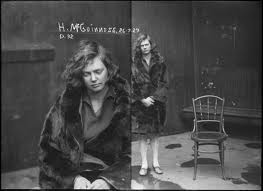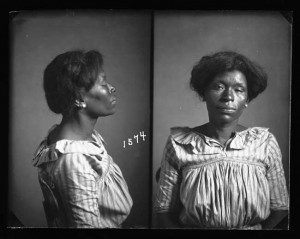Reforms & their Unintended Consequences: Women’s Reformatories in the U.S.
Yesterday, I saw this article about the abuse of women prisoners in Oregon. Since I am currently immersed in reading about the history of women in prison, I thought that I would write something about the role that “reform” has played in the history of female prisoners.
In the mid 19th century, female reformers pushed the states to establish new facilities that would house women separately from male prisoners. These would be called “reformatories.” This proposal was in response to some of the scandals that were uncovered in the treatment of female prisoners who were housed with men in penitentiaries. I wrote about some of those scandals in a post last week. Additionally, female prisoners were subjected to brutal treatment in custodial facilities.
 The new reformatories would particularly cater to young (white) first time offending women between the ages of 16 to 30 who were convicted of misdemeanors. Reformers believed that these wayward young women had the capacity to change. This was a shift from the previous societal view which held that female criminals were “fallen” women who were basically evil and irredeemable. For late 19th century prison reformers, certain female criminals could be rehabilitated into future wives and mothers. All these women needed was the proper training. Women of color, of course, were not afforded the benefit of being seen as redeemable. They were considered inherently immoral and basically beyond rehabilitation.
The new reformatories would particularly cater to young (white) first time offending women between the ages of 16 to 30 who were convicted of misdemeanors. Reformers believed that these wayward young women had the capacity to change. This was a shift from the previous societal view which held that female criminals were “fallen” women who were basically evil and irredeemable. For late 19th century prison reformers, certain female criminals could be rehabilitated into future wives and mothers. All these women needed was the proper training. Women of color, of course, were not afforded the benefit of being seen as redeemable. They were considered inherently immoral and basically beyond rehabilitation.
From the beginning, the Reformatory movement ran into trouble. States felt that these facilities were too expensive. Marie Gottschalk (2006) outlines several unintended consequences of these separate women’s prisons. Chiefly she makes this important point:
“Previously, women who committed transgressions like vagrancy, drunkenness, prostitution, and giving birth out of wedlock served short sentences in local jails, if they were incarcerated at all. Reformers successfully made the case that it was now acceptable to ignore the norm of proportionality because the aim was to treat offenders, not punish them (p.117).”
So what the reformatory movement actually succeeded in doing was to widen the net for incarcerating more women. Nicole Hahn Rafter (1985) suggests that “reformatories extended government control over working-class women not previously vulnerable to state punishment” and used the power of the state to “correct women for moral offenses for which adult men” were not incarcerated (p.158).
 In reading about women prisoners in the late 19th and early 20th centuries, I came across an interesting essay by Cheryl D. Hicks (2009) about how the state regulated working-class black women’s sexuality in Harlem at the turn of the 20th century. Many young black women were hounded and falsely charged with prostitution in Harlem. Their sexual behavior was the subject of intense surveillance by their families but also by the police. Hicks reviews prison records of young black women who were incarcerated in the Bedford reformatory in the early 20th century to learn about how these women and prison administrators described their sexual behavior. It is a really interesting read and adds a great deal to our collective understanding of how gender and race discrimination became institutionalized as justice.
In reading about women prisoners in the late 19th and early 20th centuries, I came across an interesting essay by Cheryl D. Hicks (2009) about how the state regulated working-class black women’s sexuality in Harlem at the turn of the 20th century. Many young black women were hounded and falsely charged with prostitution in Harlem. Their sexual behavior was the subject of intense surveillance by their families but also by the police. Hicks reviews prison records of young black women who were incarcerated in the Bedford reformatory in the early 20th century to learn about how these women and prison administrators described their sexual behavior. It is a really interesting read and adds a great deal to our collective understanding of how gender and race discrimination became institutionalized as justice.
I return to Marie Gottschalk (2005) to summarize the limitations of the reformatory movement:
“The reformatory movement generally took an uncritical view of the state in penal policy. It did not question the fundamentals of the prison system nor whether many of these women ought to be considered criminals at all. It authorized the state to police new areas of behavior and to sanction tougher punishments for acts that previously had been overlooked or subject to mild rebukes. It contributed to the spread of indeterminate sentencing and to erosion of the norm of proportionality in punishment. It also legitimized the practice of using institutions like reformatories to “correct” deviations from traditional roles (p.118).”
This should give current criminal legal reformers pause. We should always be vigilant that our proposed reforms do not serve to widen the net of the prison industrial complex. This should be the test of any new proposal.
